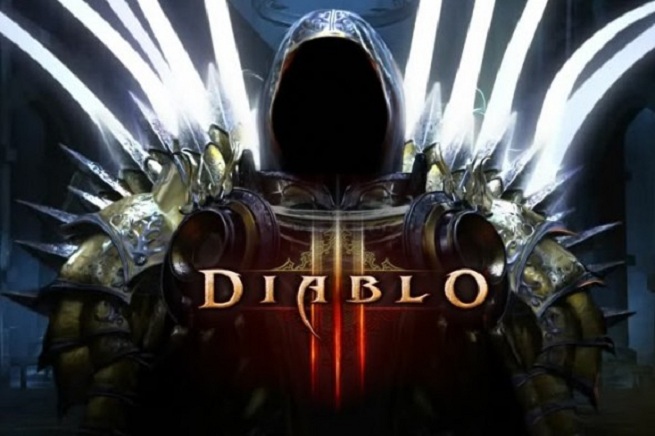
Video game sales fell 28 percent in May, with total industry sales falling to $516.5 million from $718.9 million a year ago, according to consumer market research firm NPD Group. That happened despite the launch of the fantasy action role-playing game Diablo III from Blizzard Entertainment and the first-person shooter Max Payne 3 from Rockstar Studios.
The poor performance in May was a little better percentage-wise compared to April, when sales fell 42 percent year-over-year. The strong sales of Diablo III did create a bright spot: PC game sales were up 230 percent for the month.
But the weak brick-and-mortar store sales aren’t necessarily something to fret about as retail is becoming a smaller piece of the pie, accounting for 50 to 60 percent of sales. The total spending on games, when adding digital and other sales such as used games, adds up to more than $1.17 billion in the month.
In May, hardware sales were $138.9 million, down 39 percent from $228.8 million a year ago. Software was $255.4 million, down 32 percent from $375.9 million a year ago. Accessory sales were $122.3 million, up 7 percent from $114.2 million a year ago. Accessory sales were up because of strong game-card sales as well as the success of Activision’s Skylanders products, which are hybrid toy-game devices.
The estimated total consumer spending on games includes physical video and retail games, used games, game rentals, subscriptions, full-game digital downloads, social network games, downloadable content, and mobile games. Not counting hardware, sales were $335.2 million, down 16 percent from $400.1 million a year ago.
NPD is working with video game research company EEDAR to try to come up with more accurate numbers for global digital and physical game sales worldwide. The top-selling game of the month was Blizzard’s Diablo III (pictured above).
Microsoft said that total spending on the Xbox 360 was $209 million in May. The company sold more than 160,000 hardware units in the month in the U.S., and that meant that it capture 45 percent of the U.S. market share for hardware.
Following is analysis from The NPD Group’s video game industry analyst, Anita Frazier:
Overall
These sales figures represent new physical retail sales of hardware, software, and accessories, which account for roughly 50 to 60 percent of the total consumer spend on games. When you consider our preliminary estimate for other physical format sales such as used and rentals at $155 MM and our estimate for digital format sales including full game and add-on content downloads including microtransactions, subscriptions, mobile apps, and the consumer spend on social network games at $420 MM, we would estimate the total consumer spend in May to be $1.17 B. Our final assessment of the consumer spend on these areas outside of new physical retail sales will be reported in September in our Q2 [editor’s note: second fiscal quarter] Games Market Dynamics: U.S. report.
Hardware
All hardware platforms, save the 3DS, saw a decline in unit sales versus last year. The Nintendo DS, however, did realize a 35 percent lift over April 2012 catalyzed by the May 20th price reduction on the DSi and DSi XL. Even with the price drop on the DS platform, 3DS sales realized an increase of 17 percent over last May.
New physical software
PC Games sales realized a year-over-year increase of 230 percent realizing $80 MM in sales, which softened the decline in software sales overall.
Diablo III is the top-selling title for May, the first time since July 2010 that a PC-only game accomplished this feat. Since the game launched day and date through digital distribution as well, full sales of the title are some multiple of what is reflected in the retail sales. Starcraft II was the title that topped the best-seller list in July 2010, a testament to the power of the Blizzard brand in PC gaming.
To dig deeper into the new physical retail software performance this month, new launches generated 31 percent more dollars this May than they did last May largely due to the success of Diablo III. This May, new SKU [editor’s note: stock-keeping unit] launches across console, portable, and PC game software generated 188 percent more unit sales per SKU than they did last May. So while there were fewer new item introductions this May, they collectively generated more unit and dollar sales.
YTD [editor’s note: year-to-date] 2012, there have been 27 percent fewer new software title introductions into retail, which we believe is a big part of the softness we’re seeing in May sales. A title obviously continues to see sales beyond its launch month, so there is a longer term impact from a narrower array of available new content. That said, we saw some exciting content at E3 [editor’s note: Electronic Entertainment Expo] that will come to market in the latter part of the year, and when great content comes to market, gamers are still showing up at the stores to buy it.
Accessories
The Accessory category continues to perform well due to increased video-game-card sales, up 74 percent from last May, as well as the continued success of Skylanders.
VentureBeat's mission is to be a digital town square for technical decision-makers to gain knowledge about transformative enterprise technology and transact. Learn More
